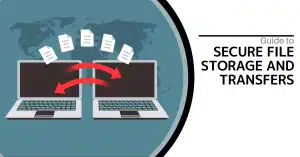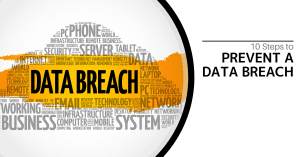Disasters have many forms. The first step to excellent disaster recovery planning is knowing what you are preparing for. These are scenarios that could affect your business without warning.
- Equipment Failure – You arrive at the office, hit the power button on your computer and go grab a cup of coffee. You come back and your computer didn’t turn on, so you hit the power switch again, but nothing happens. Your PC’s motherboard has fried. Imagine losing the entirety of documents, files, and contacts on your computer. This could happen at any given moment to any of us. The only way to avoid catastrophic data loss is by expecting it to happen and being prepared.
- Staff Unavailability – Bob has been working on a company project for months on end but has told coworkers numerous times that he is unsatisfied with his role within the company. His project is a key element in the companies next steps to success. One day, Bob stops showing up to work without notice. Does your business’ disaster recovery plan accommodate for unexpected staff unavailability whether it be an accident, a personal emergency, or a situation like Bob?
- User Error – Bob’s replacement, Rob, is taking over the company project. It’s ready to be presented and implemented. Rob accidently deletes the files when trying to transfer them to another device. A simple accidental deletion could quickly turn into a disaster without proper planning. Don’t let poor planning rob your business.
- Natural Disasters – When you hear disaster, this is likely the first thing that comes to mind. Natural disasters affect nearly every part of the world. Whether it’s a 100-year-flood that strikes unexpectedly, a hurricane that veers off of its projected path, or even something as simple yet devastating as high winds; your disaster recovery planning should accommodate situations as destructive as these.
- Malware – Malware is the most technologically advanced scenario mentioned thus far. These evolved viruses constantly plague businesses across the globe. Staying vigilant and having a successfully tested disaster recovery plan means these vicious disasters transform into an annoyance rather than a business-destroying attack.
True Planning Means Thorough, Possibly Risky Testing
A plan as previously mentioned is a proposal of a course of action you will take in the event of, in this case, disaster. Proposing a course of action is only the first step in disaster recovery planning. The second step is testing this plan.
Which would you prefer: testing your recovery plan in the wake of a disaster, or testing your recovery plan long before a disaster strikes?
There are many different ways to evaluate the proposed processes outlined in your disaster recovery plan. These include the following:
- Walkthrough Test: A walkthrough test is a simple way to review and share your disaster recovery plan. It allows you to discuss the plan with everyone involved and revise it as needed. Walkthrough tests are quick and should occur regularly to remind employees of your procedure and inform them of any changes that have been made.
- Tabletop Test: You are your own character in this tabletop game. Each team member is given the same hypothetical disaster and must explain their role in recovering. This test should be elaborate and realistic to aid in unveiling possible shortcomings in the disaster recovery plan.
- Parallel Test: A parallel test sets up recovery systems and tests them to see if they can perform actual business transactions. The goal of a parallel test is to bring your recovery site to a state of operational readiness. Primary systems still carry the full workload, and operations at the primary site continue normally.
- Cutover test: A cutover test goes even further to test recovery systems that have been built to take over the full production workload. These tests give your business a high degree of confidence that in the event of disaster, your plan truly works. Primary systems are disconnected during this test, which means this test is risk laden. If your disaster recovery plan has flaws, this test could lead to actual downtime.
All businesses should have a disaster recovery plan. If your business needs a disaster recovery plan, or just needs peace of mind that the plan you have is prepared properly, turn to the professionals at SRS Networks. Call (831) 758-3636 today.








